M. N. Murty
Multi Agent Path Finding with Awareness for Spatially Extended Agents
Sep 20, 2020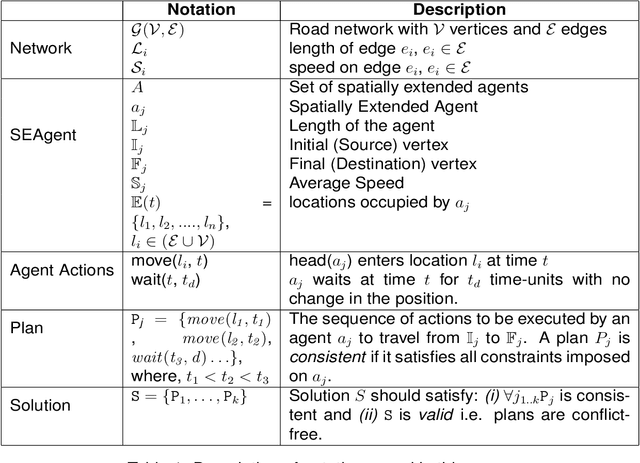
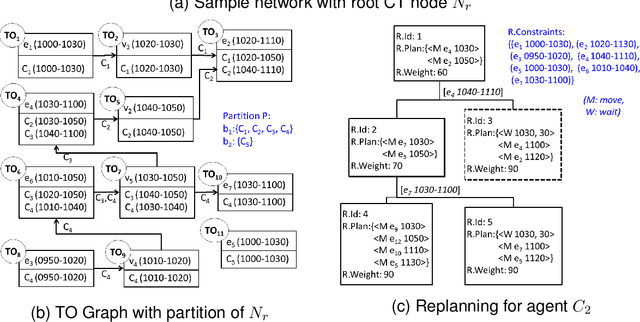
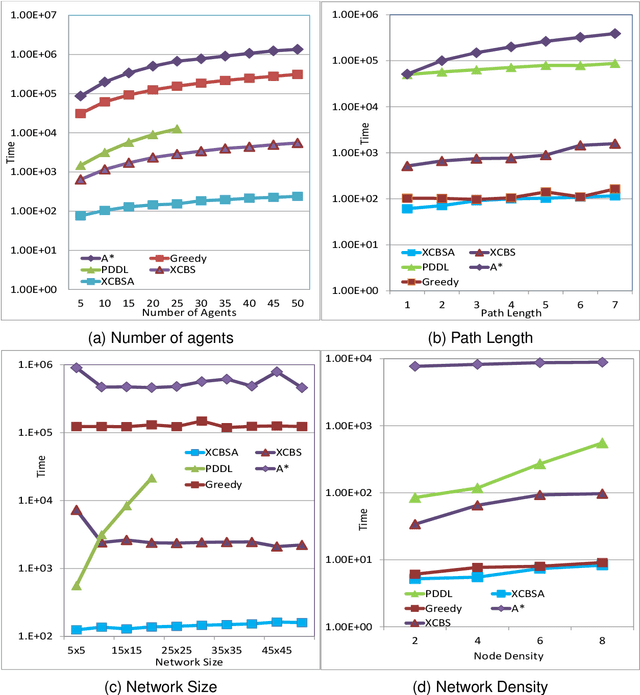
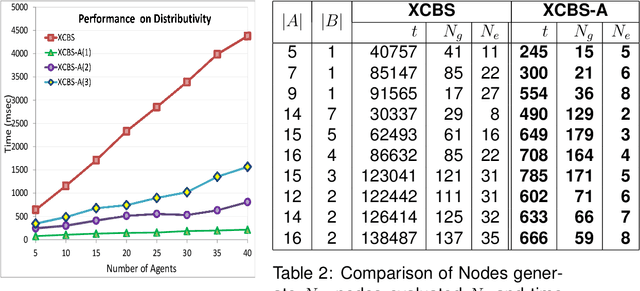
Abstract:Path finding problems involve identification of a plan for conflict free movement of agents over a common road network. Most approaches to this problem handle the agents as point objects, wherein the size of the agent is significantly smaller than the road on which it travels. In this paper, we consider spatially extended agents which have a size comparable to the length of the road on which they travel. An optimal multi agent path finding approach for spatially-extended agents was proposed in the eXtended Conflict Based Search (XCBS) algorithm. As XCBS resolves only a pair of conflicts at a time, it results in deeper search trees in case of cascading or multiple (more than two agent) conflicts at a given location. This issue is addressed in eXtended Conflict Based Search with Awareness (XCBS-A) in which an agent uses awareness of other agents' plans to make its own plan. In this paper, we explore XCBS-A in greater detail, we theoretically prove its completeness and empirically demonstrate its performance with other algorithms in terms of variances in road characteristics, agent characteristics and plan characteristics. We demonstrate the distributive nature of the algorithm by evaluating its performance when distributed over multiple machines. XCBS-A generates a huge search space impacting its efficiency in terms of memory; to address this we propose an approach for memory-efficiency and empirically demonstrate the performance of the algorithm. The nature of XCBS-A is such that it may lead to suboptimal solutions, hence the final contribution of this paper is an enhanced approach, XCBS-Local Awareness (XCBS-LA) which we prove will be optimal and complete.
Integrating Network Embedding and Community Outlier Detection via Multiclass Graph Description
Jul 20, 2020
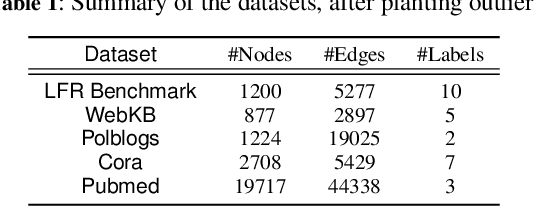


Abstract:Network (or graph) embedding is the task to map the nodes of a graph to a lower dimensional vector space, such that it preserves the graph properties and facilitates the downstream network mining tasks. Real world networks often come with (community) outlier nodes, which behave differently from the regular nodes of the community. These outlier nodes can affect the embedding of the regular nodes, if not handled carefully. In this paper, we propose a novel unsupervised graph embedding approach (called DMGD) which integrates outlier and community detection with node embedding. We extend the idea of deep support vector data description to the framework of graph embedding when there are multiple communities present in the given network, and an outlier is characterized relative to its community. We also show the theoretical bounds on the number of outliers detected by DMGD. Our formulation boils down to an interesting minimax game between the outliers, community assignments and the node embedding function. We also propose an efficient algorithm to solve this optimization framework. Experimental results on both synthetic and real world networks show the merit of our approach compared to state-of-the-arts.
Beyond Node Embedding: A Direct Unsupervised Edge Representation Framework for Homogeneous Networks
Dec 11, 2019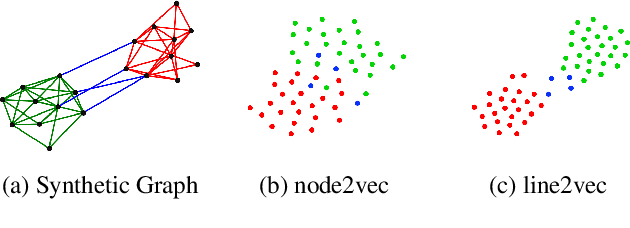

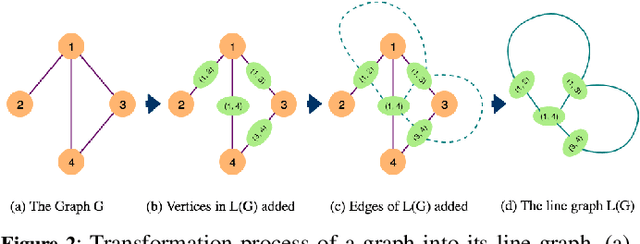

Abstract:Network representation learning has traditionally been used to find lower dimensional vector representations of the nodes in a network. However, there are very important edge driven mining tasks of interest to the classical network analysis community, which have mostly been unexplored in the network embedding space. For applications such as link prediction in homogeneous networks, vector representation (i.e., embedding) of an edge is derived heuristically just by using simple aggregations of the embeddings of the end vertices of the edge. Clearly, this method of deriving edge embedding is suboptimal and there is a need for a dedicated unsupervised approach for embedding edges by leveraging edge properties of the network. Towards this end, we propose a novel concept of converting a network to its weighted line graph which is ideally suited to find the embedding of edges of the original network. We further derive a novel algorithm to embed the line graph, by introducing the concept of collective homophily. To the best of our knowledge, this is the first direct unsupervised approach for edge embedding in homogeneous information networks, without relying on the node embeddings. We validate the edge embeddings on three downstream edge mining tasks. Our proposed optimization framework for edge embedding also generates a set of node embeddings, which are not just the aggregation of edges. Further experimental analysis shows the connection of our framework to the concept of node centrality.
Outlier Aware Network Embedding for Attributed Networks
Nov 19, 2018
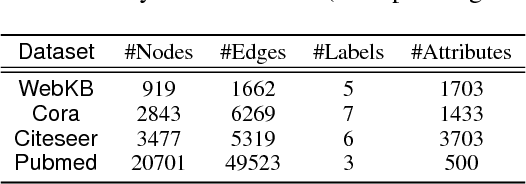
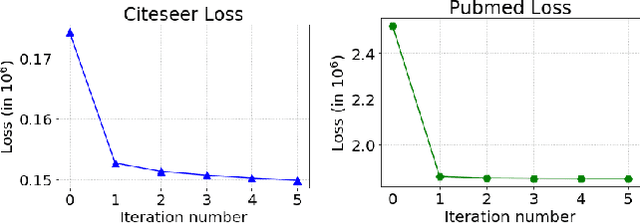

Abstract:Attributed network embedding has received much interest from the research community as most of the networks come with some content in each node, which is also known as node attributes. Existing attributed network approaches work well when the network is consistent in structure and attributes, and nodes behave as expected. But real world networks often have anomalous nodes. Typically these outliers, being relatively unexplainable, affect the embeddings of other nodes in the network. Thus all the downstream network mining tasks fail miserably in the presence of such outliers. Hence an integrated approach to detect anomalies and reduce their overall effect on the network embedding is required. Towards this end, we propose an unsupervised outlier aware network embedding algorithm (ONE) for attributed networks, which minimizes the effect of the outlier nodes, and hence generates robust network embeddings. We align and jointly optimize the loss functions coming from structure and attributes of the network. To the best of our knowledge, this is the first generic network embedding approach which incorporates the effect of outliers for an attributed network without any supervision. We experimented on publicly available real networks and manually planted different types of outliers to check the performance of the proposed algorithm. Results demonstrate the superiority of our approach to detect the network outliers compared to the state-of-the-art approaches. We also consider different downstream machine learning applications on networks to show the efficiency of ONE as a generic network embedding technique. The source code is made available at https://github.com/sambaranban/ONE.
 Add to Chrome
Add to Chrome Add to Firefox
Add to Firefox Add to Edge
Add to Edge